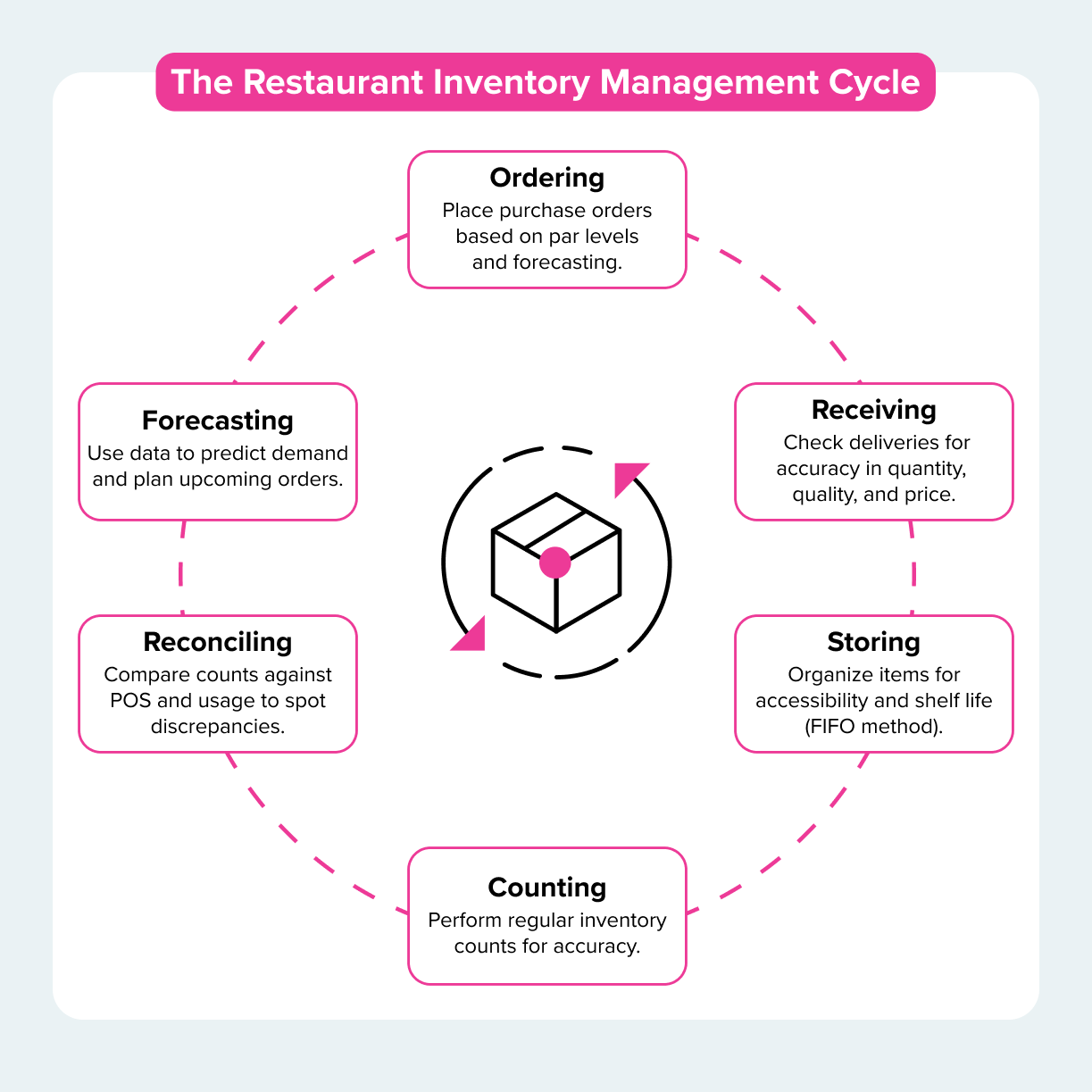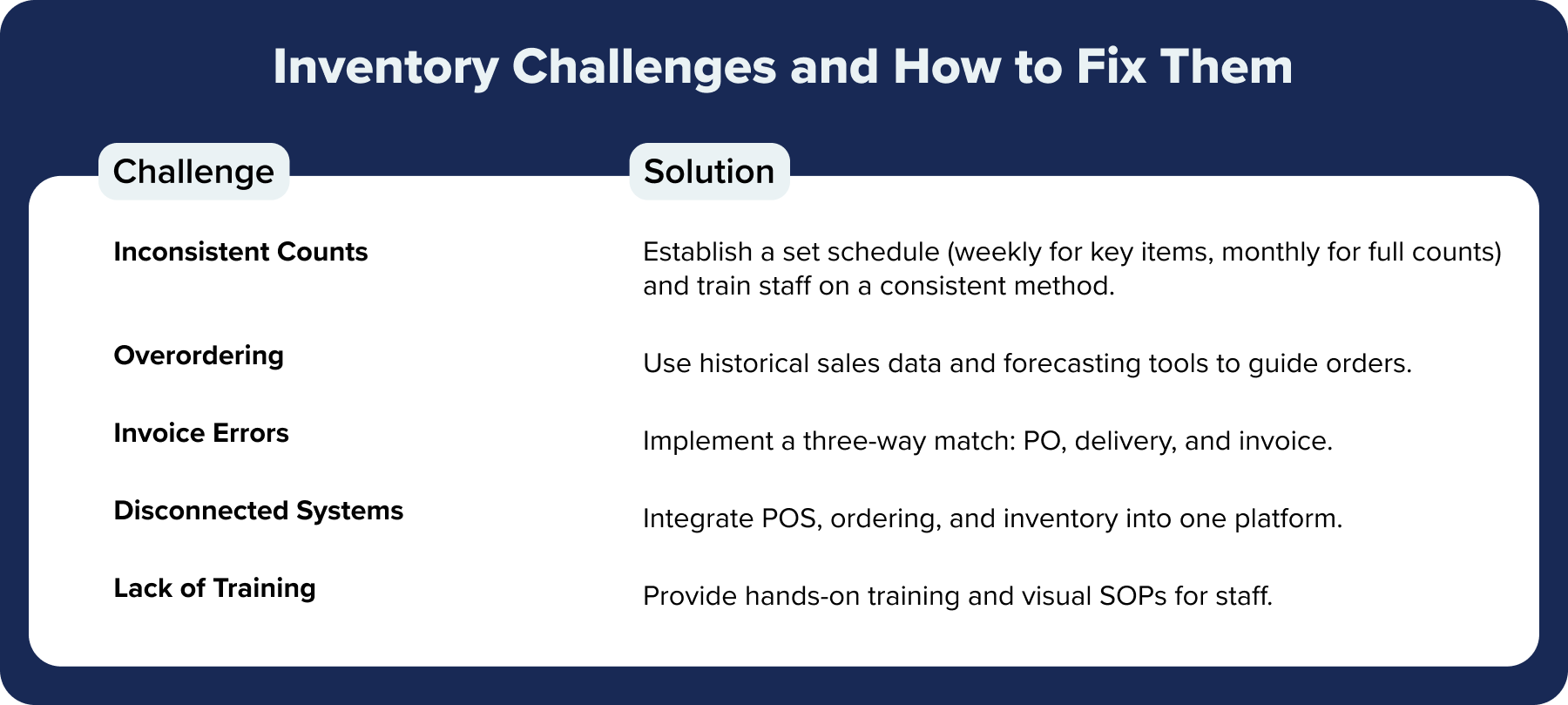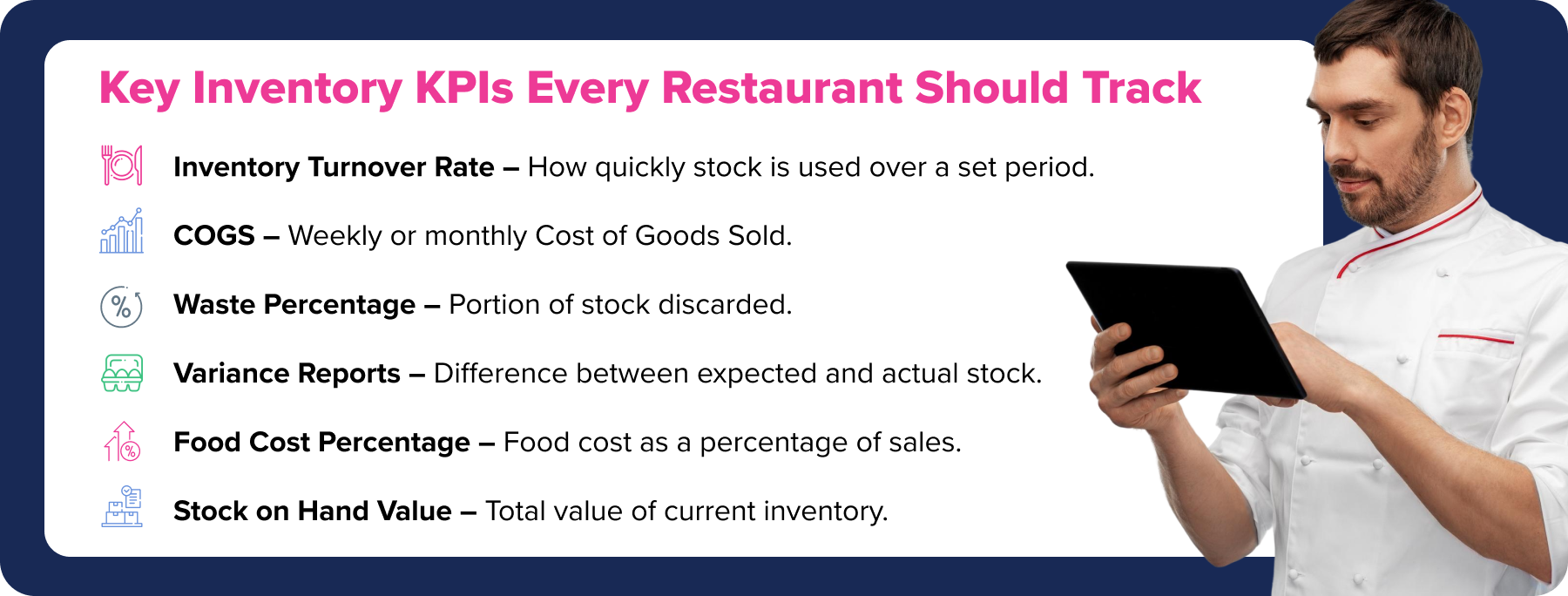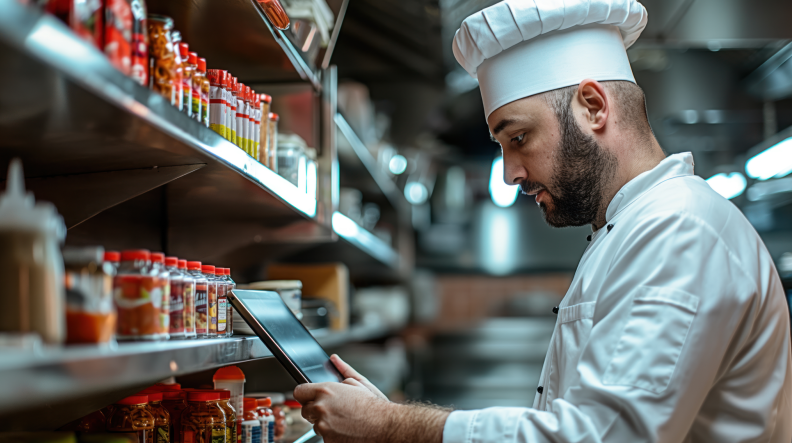It takes balance to run a restaurant. The inventory comes after the food, service, employees, and visitors. Although it may not be the most glamorous aspect of the company, it is one of the most crucial. Overordering, theft, waste, and lost opportunities are all silent ways that poor inventory control can reduce profits.
Conversely, effective inventory control reduces expenses, increases ordering precision, and provides the information you need to make more informed business decisions. We’ll go over the procedures, resources, and best practices in this guide to help operators manage their inventory, cut waste, and increase long-term profitability.
What is Restaurant Inventory Management?
The continuous process of monitoring all the food, drinks, and supplies in your establishment, from the time they are ordered until they are used, is known as restaurant inventory management. To ensure you always know exactly what’s on hand, it entails ordering, receiving, storing, counting, and reconciling inventory. When done correctly, it keeps your kitchen functioning efficiently, reduces waste, and eliminates needless expenses.
The objective is straightforward: ensure that you have the appropriate products, in the appropriate amounts, at the appropriate times, without investing money in surplus inventory.

Advantages of Restaurant Inventory Management
Strong inventory management does more than keep shelves organized; it directly impacts your bottom line.
- Ordering Accurately: You will know exactly what to buy, which will help you avoid running out of stock or having too much of it.
- Waste Reduction: Keeping regular records can help you find theft, shrinkage, and spoilage before they cost you a lot of money.
- Better Cash Flow: You don’t waste money on shelves that aren’t used when you only order what you need.
- Cost Visibility: Using real-time data, you can keep an eye on spending patterns and find ways to save money.
- Menu Optimization: Make sure you’re investing in best-selling items by matching purchases to menu performance.
- Streamlined Operations: A clear, repeatable process saves staff time and reduces stress.
One of your biggest expenses is food, and good inventory management will help you keep track of it. That control leads to higher profits, fewer problems, and the ability to quickly adjust to changes in prices or demand.
Common Inventory Management Challenges and How to Overcome Them
When it comes to inventory, even well-run kitchens encounter difficulties. Among the most typical difficulties are:

You need to be consistent and open to change in order to get through these problems. The rewards are better control, less waste, and a healthier profit margin.
How Inventory Affects Restaurants’ Profits
The decisions you make about your inventory have an impact on all parts of your business. Having too much stock costs money and increases the chances of things going wrong. Having too little stock can mean lost sales and unhappy customers. Good inventory management helps you guess how much you’ll need, stay away from both extremes, and buy smart. Because of this, there are fewer surprises, food costs go down, and there is more money available for marketing, training employees, or upgrading equipment.
Key Terms for Restaurant Inventory Management
Understanding inventory terms makes it easier to train your team and interpret reports. Here are some essentials:
- COGS (Cost of Goods Sold): Total cost of the ingredients used to make the food on your menu.
- Par Level: The right amount of a product to have on hand.
- FIFO (First In, First Out): This means using the oldest stock first to cut down on waste.
- Shrinkage: Loss of inventory due to theft, waste, or error.
- Variance: The difference between recorded inventory and actual counts.
These terms are the building blocks of inventory conversations, ensuring everyone speaks the same language when it comes to stock control.
Restaurant Inventory Management Key Performance Indicators (KPIs)

KPIs make it possible to turn inventory tracking into useful information. Here are some important numbers to keep an eye on:
- Inventory Turnover Rate – The number of times you use your inventory in a certain amount of time. Higher rates often indicate efficient purchasing.
- COGS – Knowing your weekly COGS can help you find problems early and see patterns.
- Waste Percentage – This tells you how much product is thrown away. Lowering this number makes the business more profitable.
- Variance Reports – Pinpoints the differences between expected and actual stock.
- Food Cost Percentage – The ratio of food cost to sales, which has a direct effect on margins.
- Stock on Hand Value – Shows how much money is tied up in current inventory.
Tracking these KPIs regularly helps operators fine-tune purchasing, portioning, and menu pricing.
Plan Ahead with Smart Inventory Insights
Using past sales, seasonal trends, and upcoming sales, forecasting can tell you what you will need and when. This keeps high-demand items from running out and from being overstocked. Forecasting correctly makes more money, cuts down on waste, and makes sure that your menu is always available, even during busy times.
Best Practices for Efficient Restaurant Inventory Management
- Standardize Your Process: Maintain uniformity in counts, ordering, and storage across locations and shifts.
- Train Staff: Rotation, labeling, and proper handling all help to prevent spoiling.
- Regular Counts: Weekly for high-value items; monthly for full inventory.
- Set Par Levels: Use historical data to guide reorder points.
- Monitor High-Value Items: Pay attention to proteins, alcoholic beverages, and pricey produce.
- FIFO Method: First in, first out! Use older things first all the time.
- Audit Vendor Invoices: Check the invoices from your vendors to make sure you were charged the right amount for what you got.
These habits help your kitchen run smoothly, save you time, and lower your costs.
Use Technology to Manage Your Restaurant Inventory
With modern inventory tools, you don’t have to guess how to manage your stock. You don’t have to rely on old counts or your gut feeling anymore; you can see live data that shows you exactly what you have on hand. It’s easier than ever to keep track of shortages and overstock with features like mobile inventory tracking, vendor connections, automated orders, and instant alerts. The right system doesn’t just make it easier to keep track of inventory; it also makes it a real money-maker.
How to Choose the Best Restaurant Inventory Management Software?
When you look at restaurant inventory software, keep an eye out for:
- Integration: It should workc with POS, ordering, and accounting systems.
- Mobile Access: Lets you see counts in real-time from anywhere in the kitchen.
- Real-Time Tracking: Keeps your numbers correct at all times.
- Tools for Forecasting: Helps you plan for changes in demand.
- Custom Alerts: Flags low stock or unusual usage patterns.
- User-Friendly Interface: Encourages staff adoption.
- Scalability: Supports future expansion and multiple units.
- Training & Support: Get help from teams that know how to onboard and fix problems.
Investing in the right platform saves labor, increases accuracy, and makes smarter purchasing decisions possible.
How the Buyers Edge Platform Can Help You?
Buyers Edge Platform helps restaurants simplify inventory management through integrated back-office and analytics solutions. We provide:
- Automated inventory counts
- Price of ingredients in real-time
- Forecasting and reporting
- Checks for contract compliance
- End-to-end visibility from ordering to usage
We offer the resources and knowledge you need to manage food expenses more effectively, reduce waste, or increase ordering accuracy.
Advanced Methods for Making the Most of Your Inventory
Once you know the basics, think about:
- Menu Engineering Alignment: Put your most profitable dishes at the top of the list.
- Centralized Purchasing: Use negotiated contracts and combine vendors.
- Waste Audits: Look for patterns of loss that happen over and over again.
- Just-in-Time Ordering: Cut down on the time that perishable goods have to sit in storage.
- Forecasting for Promotions: Change based on upcoming LTOs.
- Dashboards & Alerts: Take action right away when you see trends or strange things happening.
These strategies save money, cut costs, and make it easier to grow.
FAQs
Q: What is inventory management in restaurants?
It involves keeping track of and overseeing all food, drink, and supply inventory from acquisition to consumption.
Q: What makes inventory control crucial?
It facilitates precise ordering, reduces waste, and keeps costs under control.
Q: How frequently should inventory be counted?
Many restaurants conduct bi-weekly cycle counts; weekly for high-value items; monthly for a complete count.
Q: What tools can help with keeping track of inventory?
The best software is that which integrates with accounting, ordering, and point-of-sale systems.
Q: What does FIFO mean?
First In, First Out – using older items first to reduce spoilage.
Q: What can I do to cut down on food waste?
Use accurate portioning, prep sheets, and waste audits.
Q: Can spreadsheets work?
Yes, but they’re time-consuming and prone to errors. Software is faster and more accurate.
Q: How does Buyers Edge Platform help?
We provide automation, forecasting, analytics, and contract compliance to streamline inventory control.
Do you want to take charge of your restaurant’s food expenses and inventory? Click here to connect with Buyers Edge Platform and explore how our back-office and analytics solutions can support smarter, more profitable operations.

